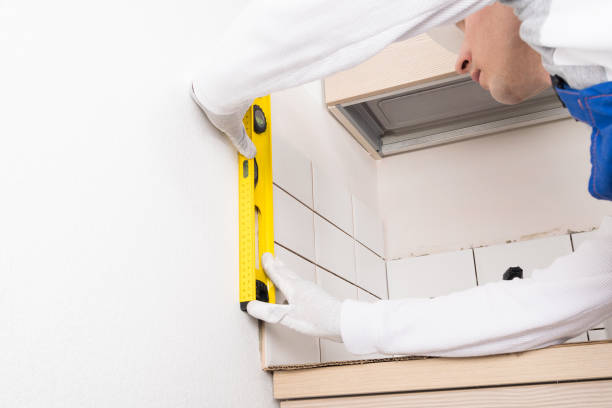In the last 15 years, the UK government has consistently failed to meet its recommendations and targets for improving the affordability and availability of housing.
It may not seem possible to build a home with so little social mobility and stability for those who do manage to get on the property ladder.
Self-building allows people to build a house that is tailored to their specific needs. This includes space, amenities, and energy efficiency. Why aren’t there more self-builders in the UK?
It’s a very popular option in many countries across Europe. Self-build rates for new homes in many countries exceed 60. Austria leads the way, followed by Belgium, Italy, Sweden, and even Ireland. The UK, however, has the lowest rate of self-build in the world at 11%.
This could be due to a number of reasons, including a lack of knowledge about building a house on your own or concerns over financing. To learn more, let’s look at the statistics about attitudes and options around self-building in Britain.
What does ‘Self Build’ mean?
Many people imagine someone digging foundations and laying the bricks themselves. If they’ve heard scary stories about self-building, they may imagine someone living in a tent on a muddy lot, chasing down cowboy builders so they can finish their house.
These two scenarios are not necessarily true. Although a self-build project is a significant undertaking, it doesn’t necessarily require building experience or management degrees.
The Building Societies Association reported on self-build loan information, revealing that only 3.3% were DIY projects. In comparison, the majority of these ( 39.9% ) were self-managed projects using their labour in combination with subcontractors.
Many self-builders delegated their work to tradespeople they had arranged, and many hired builders for the structure but completed the interior themselves. Only 12 of the jobs were completed by professional builders without any involvement from the self-builder.
14% were ‘kit homes,’ now known more commonly as modular houses. This involves purchasing a pre-designed ‘flat-pack house’ from a company that supplies prefabricated materials after the buyer prepares the ground.
Modular housing, however, is not usually considered self-build because it’s primarily built off-site. Self-build models typically rely on a mix of subcontractors, builders, and project managers, whether you want to be hands-on or hire a team.
What do self-built homes in the UK look like?
The 2022 Custom and Self-Build Market Survey of the National Custom and Self-Build Association revealed that self-builders are the ones who make the decisions about building materials ( 66.4%) and finish materials ( 82.7%). Here are the choices made by respondents:
- Prefabricated timber frames are the second most popular self-build system ( 19.5%), after brick and mortar ( 35.5%).
- The most popular exterior finish is render ( 31 %), followed closely by brick ( 27 %) and then timber cladding.
- The most common roofing material is slate ( 31 %), then clay tiles or concrete tiles ( 19 and 18, respectively).
- The most common window frame material is timber alternative (uPVC), followed by aluminum ( 26) and wood ( 20).
- The most popular central heating system is gas ( 43 %), followed by an air-source heat pump ( 5 %).
The report revealed that the average size of a self-built house in the last five years was 268m 2, and the average budget was 312,000 PS.
Around 15 self-builders have reported that they went over budget. However, the primary reason was the decision to change the specifications midway through the project.
Only 65 respondents used a self-build mortgage. Around 45 also needed financial assistance to complete their project. This indicates that self-build mortgages are not well known.
Which group is more likely to want a self-build home in the UK?
A 2020 Research on Self-Building Aspirations study commissioned by NaCSBA and BSA found that around a third of British adults ( 32 ) are interested in building their own home. 29% of these respondents said that it was very likely or fairly likely they would make their home in the near future.
The age group that expressed the most interest ( 48 ) in self-building was 18-24 years old. Forty-one said they would likely build their home in the future.
The results of this survey were in line with the findings of a separate 2020 Self-Build Market Research study by the Ipswich Building Society. In that survey, 35 out of 2,000 adult respondents said that they might consider building their homes at some stage. The 18-24 year old age group expressed the greatest interest.
If the economy and government assistance improves for the younger generation, it could lead to a boom in self-build.
What Are The Barriers to Self-Building in the UK?
The Cambridge Centre for Housing and Planning Research published a review in 2022 of Custom Housebuilding and Self-Building in the UK. The research in this report suggests that three major reasons for the UK’s low self-builder numbers are:
- Fundraising difficulties
- Planning system problems
- Self-development is not well understood
The (more recent) NaCSBA above Custom & Self Build Market Report confirms these findings. It found that the main obstacles to self-building in the UK were finding a plot, obtaining planning permission, and securing a loan.
Self-building is more difficult in the UK than in other European countries. This makes it less attractive to people who would rather buy new homes or secondhand ones.
The UK government has acknowledged the need to develop self-building and provided various schemes in the past decade (as examined in the Bacon Review that Prime Minister Cameron commissioned). Still, it’s yet to be seen if these will help grow a culture of self-building in the UK.
Would You Like to Join the ‘Self-Build Revolution?
Would you be willing to start your self-build project now that you have a better understanding of what it entails?
As more people choose to build their own homes, government agencies and other institutions, such as developers and lenders, will be forced to increase their services to meet the demand.
The government offers a “Help to Build” scheme that provides equity loans up to 5-20%. However, they also need to get a self-build mortgage. The UK banks are slowly increasing their offering of mortgages. They offer specialist loans for at least 75 the land value and construction costs.



